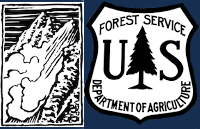GNFAC Avalanche Forecast for Mon Nov 9, 2020
<p>In the last two days, Cooke City received 13” of new snow (1.2” of <a href="https://mtavalanche.com/taxonomy/term/451">snow water equivalent</a>, SWE) with 4-7” (0.5-0.6” of SWE) in the mountains around West Yellowstone, Bozeman, and Big Sky. Yesterday, a skier in Hyalite observed this new snow getting drifted by the wind and got an unstable test result with an extended column test. Avalanches will be most likely where the wind has drifted the new snow and in areas where there was snow on the ground before the last storm. Recent avalanche activity, whumphing, and cracks shooting out from your feet indicate danger if you are on a steep slope. Move to flatter terrain and obsess about the consequences of even a small slide. If you are getting out in the mountains, everyone in your group needs to carry and know how to use a beacon, shovel, and probe.</p>
<p>If you decide to hold off and wait for more snow, practice with your rescue equipment and take an avalanche class. <strong>TONIGHT</strong>, Ian and Alex will discuss local avalanche issues and strategies at the virtual <a href="http://www.montana.edu/outdoorrecreation/SAW.html"><strong>MSU Snow and Avalanche Workshop</strong></a> at 7:00 p.m.</p>
<p>Remember that avalanches do not care whether you are bringing an elk out of the mountains or searching for powder. Dial back early season objectives to reflect higher levels of uncertainty this time of year and the consequences of getting dragged across rocks and through trees by an avalanche.</p>
<p>We’ll be updating the <a href="https://www.mtavalanche.com/weather/wx-avalanche-log"><strong>weather log</strong></a>, <a href="https://www.mtavalanche.com/photos"><strong>photos page</strong></a> and <a href="https://www.mtavalanche.com/avalanche-activity"><strong>avalanche activity list</strong></a> daily and issuing early season updates throughout the fall as conditions merit. If you have avalanche, snowpack or weather observations to share, please submit them via our <a href="https://www.mtavalanche.com/node/add/snow_observation"><strong>website<…;, email (<a href="mailto:mtavalanche@gmail.com"><strong>mtavalanche@gmail.com</strong></a…;), phone (406-587-6984), or Instagram (#gnfacobs).</p>
Upcoming Avalanche Education and Events
See our education calendar for an up to date list of all local classes. Here are a few select upcoming events and opportunities to check out:
The 6th Annual MSU Snow and Avalanche Workshop will be an hour of live online talks each Monday evening in November.
